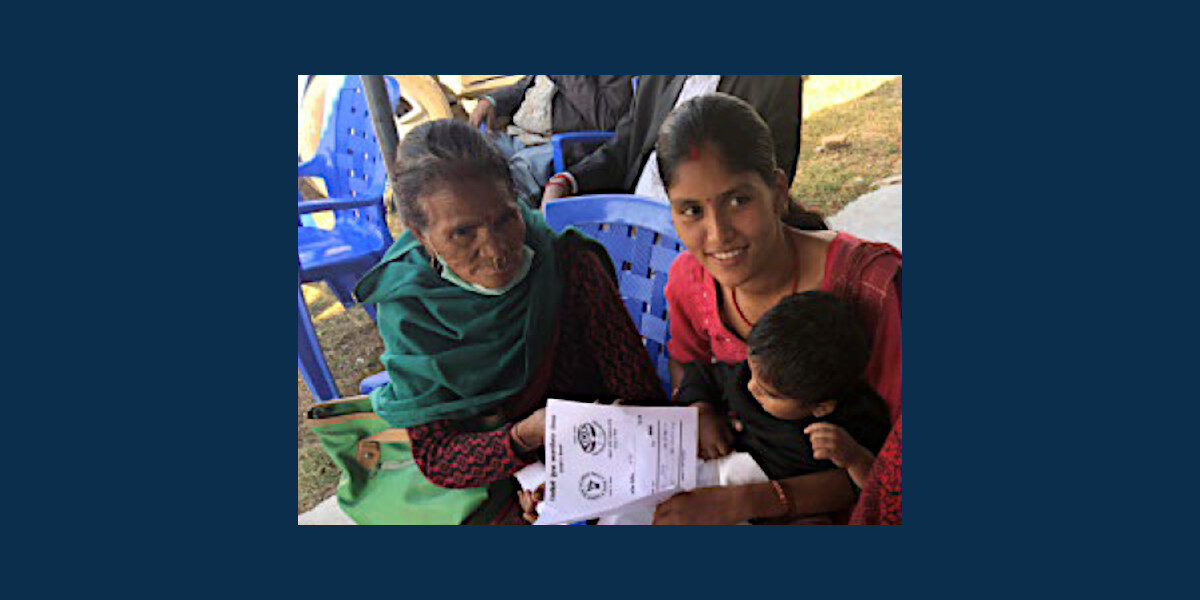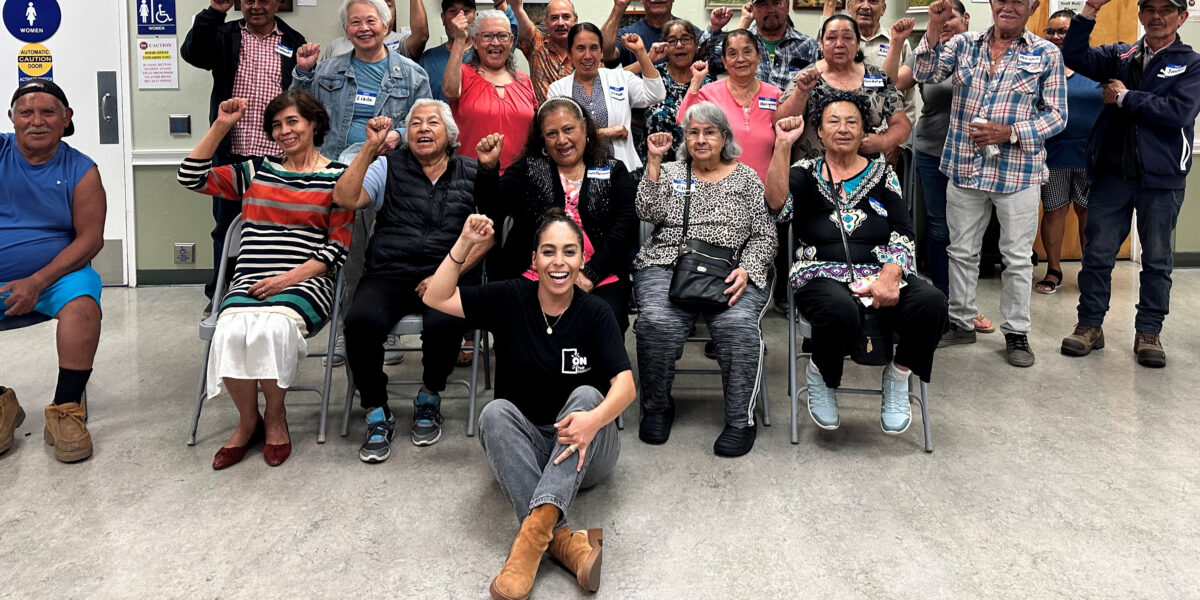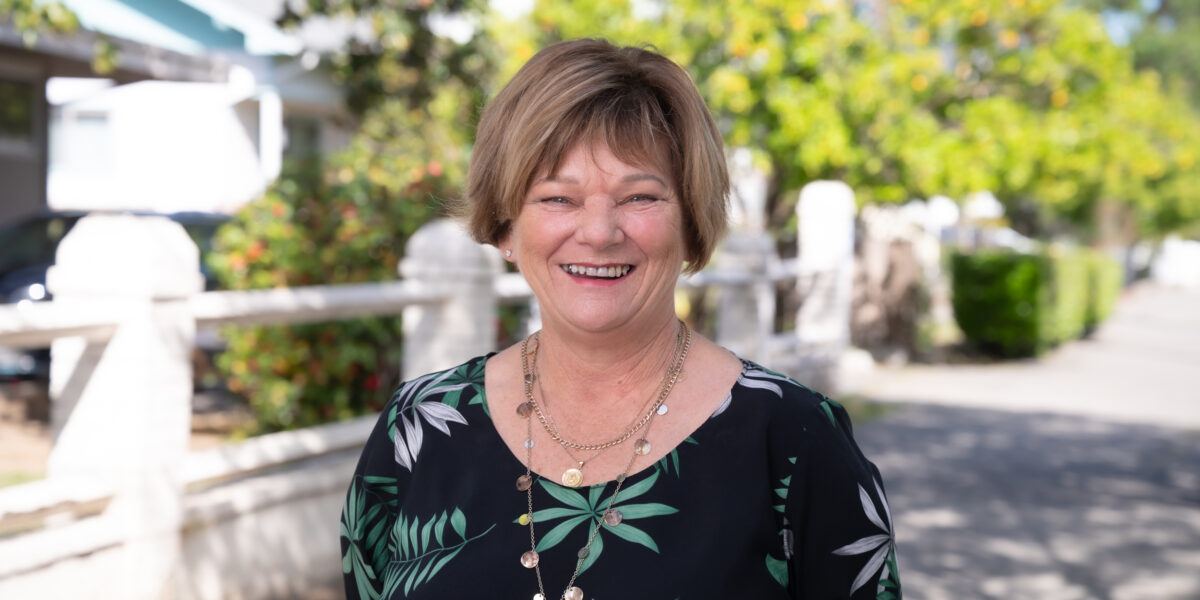In addition to his local ophthalmology practice, Healthcare Foundation Board member Dr. Gary Barth has long been committed to serving overseas to eradicate operable blindness (most of the world’s preventable blindness is due to cataracts) and improve eye health generally in developing countries in Asia. In 2019, Gary co-founded BBH Eye Foundation with colleague Jack Blanks to continue this work in areas not yet reached by other charities. In December, BBH was in Nepal and Bangladesh establishing free eye clinics in collaboration with local partners.
Gary’s work with BBH Eye Foundation is not only inspiring in itself, but also offers some unexpected parallels with the work of the Healthcare Foundation here in northern Sonoma County. Gary kindly agreed to speak with us recently about his December mission with BBH in December, and share his insights into how to best support local initiatives for community health.
What are the origins of BBH Eye Foundation?
Similar to other nonprofits, Jack and I started in larger organizations, working mostly in Southeast Asia but also in South America and Africa. We met through the Seva Foundation, which is America’s second-largest and oldest eye-focused charity. Jack was the executive director and I was on the board. When we eventually left the Seva Foundation, we wanted to keep using the skills we had learned and the contacts we had. We found we had gained some insight into where more nimble, smaller charities and foundations could make a difference—especially once we identified people who were working well above average, both in terms of quality and efficiency, to help people in poverty. We decided we would work in the seams that others were not working in.
That’s how it started—with Jack and I, and another fellow, Gary Hahn, just brainstorming. We got another set of partners in Australia, D & K Foundation. Between us we’ve been able to really advance blindness restoration in Nepal, Myanmar, and Bangladesh.
How many years have you been doing this?
It’s been a little more than three. We didn’t really expect to run it past three, but we keep getting more traction and more people we want to help.
“We’re doing trust-based donations to people in Nepal and Bangladesh, and in India and Myanmar. It’s not that different from what the Healthcare Foundation does with many small but confident and nimble ventures in northern Sonoma County, people who feel like they can make a difference.”
Dr. Gary Barth, Barth Vision & Optical and Healthcare Foundation Board Member
Can you tell us about this recent effort in Lamki, Nepal?
The founding of a Primary Eye Care Clinic had the buy-in of the city administrators and the mayor; their city of 60,000 did not have any eye care services. They wanted our support to equip a clinic, and they were willing to lease and make some improvements on a building if we would help get it up and running. It started last September and it’s already making money. They’re doing exams, getting kids and adults fitted with glasses that they fabricate onsite. We have a strong link with a quality secondary eye hospital for those that need cataract surgery. Years from now it should be running on its own. Jack and I are just delighted. We have some other communities in Nepal that would love to get into similar ventures.
Can you describe the landscape of need?
They don’t necessarily have greater eye problems than another area, it’s just that there’s such a shortage of skilled providers and access to capital to purchase the ophthalmic and optical equipment. In places like Bangladesh and Nepal, it’s really hard for charity organizations to afford the needed and imported equipment. One of the problems is the lack of equipment, more than a lack of skilled providers.
So is the difference a relative lack of access to care?
Yes. In both Bangladesh and Nepal, a lot of it is that people either don’t know about the access, don’t know where to go, or can’t get there because they don’t have transportation and can’t afford it. There are a lot of reasons that free eye camps make a difference in these two countries. But it’s not an absolute dearth of skilled providers because both countries have good educational systems. It’s a different story in Myanmar.
Are cataracts the major concern?
That’s right, our main focus is cataract surgery. We’ve opened nine of these primary eye care centers (PECCs) in Nepal in the last year-and-a-half. All nine are linked in a hub-and-spoke manner to a place for eye surgery to get the cataracts removed. One of our goals in setting up these PECCs is to identify people who otherwise could see if they could just have a five-minute cataract surgery; then get them on a bus or a minivan to one of the hubs that we know do a good job. These peripheral PECCs are triaging referral sites, with that secondary site as part of the network.
“We’ve opened nine of these primary eye care centers (PECCs) in Nepal in the last year-and-a-half. All nine are linked in a hub-and-spoke manner to a place for eye surgery to get the cataracts removed.”
Dr. Gary Barth, Barth Vision & Optical and Healthcare Foundation Board Member
Has the effort produced the results you’d hoped for?
The impact is huge. If you’re doing 50 to 60 sight-restoring cataract surgeries a day on blind eyes, and the patients are paying nothing, it’s fantastic—because every blind person is also a burden on someone in the family, whether it’s a grandson or a wife. When you’re blind you don’t bring in money and are often tough to take care of. So the benefit of 60 surgeries is really on 120 people, at least, who have been removed from the shackles of blindness. So, yes, we’re very pleased.
Has this experience informed your thinking about healthcare here at home? Do you see any similarities?
There are similarities. We’re doing trust-based donations to people in Nepal and Bangladesh, and in India and Myanmar. It’s not that different from what the Healthcare Foundation does with many small but confident and nimble ventures in northern Sonoma County, people who feel like they can make a difference. They have spotted a need, they know some good people, and they are going to get together and start an organization or a program.
For instance, the Healthcare Foundation Board just met with Juan Torres, executive director of Humanidad Therapy & Education Services. Humanidad is a grassroots organization that was started basically by one person, and then two more joined her, and so on. They found a need for bilingual, bicultural therapists, and they’re doing an incredible job.
That’s what I see the Healthcare Foundation doing: looking for people like this on the ground in northern Sonoma County, and saying, “You do more of what you’re doing, we’ll help you. But don’t spend time and precious resources writing us quarterly reports. Instead, let’s chat in six months or a year, when you can give us the update that’s important to you, and then let us know how we can help you some more.”
I think there are a lot of similarities, in scope and trust, and in how these operations are generated.
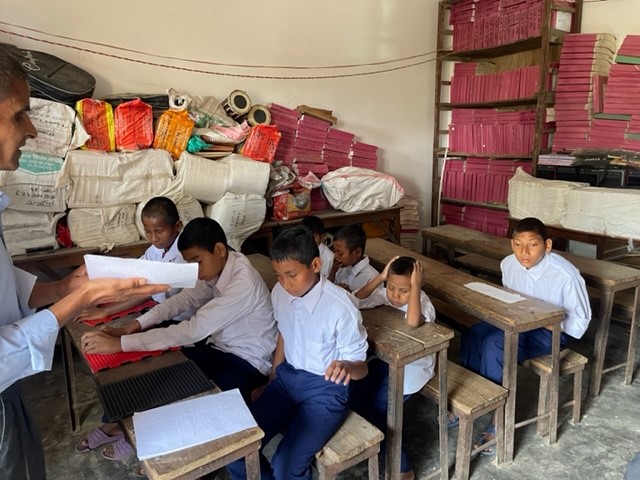
Is there a particular moment that stands out for you from your trip in December?
A couple. One was a residential school house where the kids, who had been born blind, sat just eight feet away from all these donated musical instruments seen in the photograph. Unfortunately, they don’t have a music program because they can’t get a teacher. You think to yourself, “If I were blind and in a classroom with ten other kids and I couldn’t see them, wouldn’t it be great to hear them? Wouldn’t it be great to play music with them?” I think if I could find some way to get these kids to spend part of the day playing instruments with each other, it would be wonderful.
In a way it would be treating blindness by another method.
Yes, exactly, treating the whole person.
Was there another memory?
There was the day we went by a clinic in Nepal where they were going to do surgery on anybody who showed up by the end of screening time at 5:00 PM. They had announced this through loudspeakers, driving through the villages, that those who needed cataract surgery would get it that same day. We went by mid-morning on our way to a couple of other sites. I asked the surgeon, Ravi, whom I had worked with previously in both Myanmar and Nepal, “How many surgeries do you think you’ll do?” He said, “Oh, maybe 50.” We circled back around 6:30 at night and he still had 40 to go.
He ended up doing 90 surgeries, ending at 10:00 at night. Not one of these people had an appointment. Not one had a cellphone to call their family and say, I’m here at the clinic. They just sat on their haunches in the stairwells and out on the street. Every time a surgery was done, every six minutes or so, they got up, moved about a foot-and-a-half, and sat down again. They didn’t want to leave their spot. Seeing all these people hunkered down hour after hour, slowly moving ahead one by one, you think to yourself, there is a lot of blindness here. This was their chance.
Abroad and at home, Gary continues to inspire others in support of equitable health access. Through Barth Vision & Optical in Healdsburg, Gary supports the Healthcare Foundation’s mission as a Healthcare Hero Community Partner and invites community members to join him at ANY AMOUNT as a Healthcare Hero.
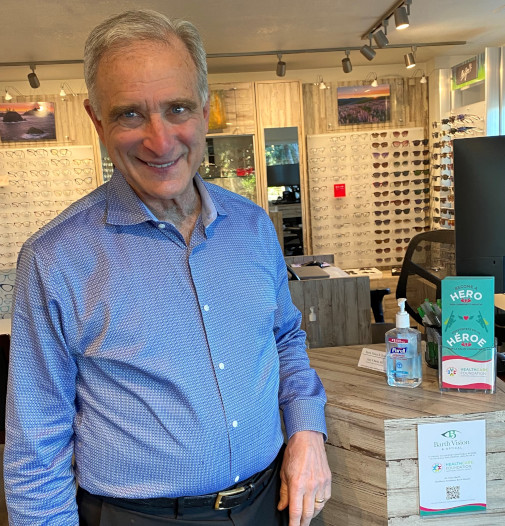

Related News + Stories
Invest in Our Community
Your support is vital to our collective vision of eliminating health inequities in northern Sonoma County.
Donate

